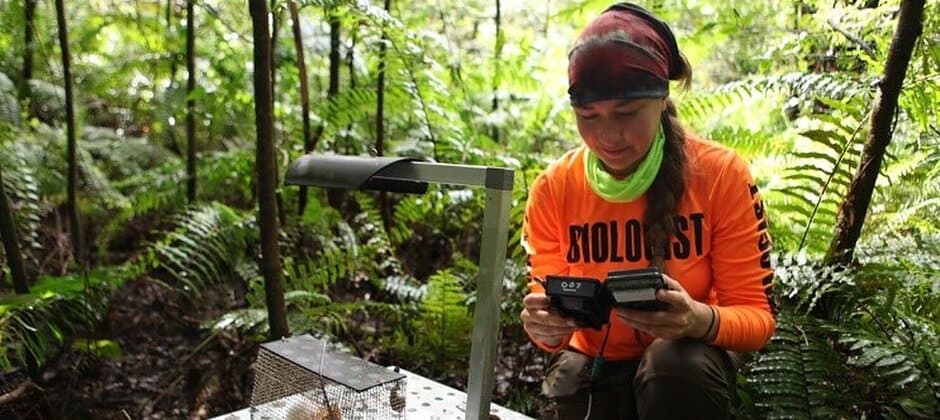Share this article
Cameras gather key snake data on Guam
Brown treesnakes are known for their elusiveness, which makes it difficult for researchers and managers to assess the effectiveness of tools to manage them on the island of Guam, where they are invasive and incredibly destructive.
Because of these snakes’ cryptic nature, traditional methods for estimating wildlife abundance don’t work well for them. As a result of this—and the variation in detection rates among class sizes—estimates of brown treesnake (Boiga irregularis) can be inaccurate, making it harder to quantify potential risks to native species, such as the endangered Guam rail (Gallirallus owstoni).
“Recent work with wildlife cameras has led to a new method for estimating potential predation risks to native birds by brown treesnakes,” said USDA Wildlife Services research wildlife biologist Shane Siers. “We can more accurately measure snake activity in an area by capturing images of snakes at live lure chambers versus trapping the snakes.”
Since their accidental introduction shortly after World War II to the island of Guam, brown treesnakes have caused millions of dollars in damages to the island’s power infrastructure, inflicted painful bites to humans, preyed on domestic animals and caused the extinction or extirpation of nearly all of Guam’s forest birds. Wildlife Services and its partners have made great strides in reducing damage and suppressing snake populations, opening up the possibility of reintroducing native birds and lizards to some parts of the island. But before that can happen, more information is needed on potential predation risks at reintroduction sites.
Although live lure contact rates may be a cost-effective way to determine the frequency of brown treesnake predation attempts, not all snake encounters carry the same risk of predation. Previous research has shown that brown treesnakes can grow up to 10 feet in length. Differences in body weight and length directly affect prey and habitat selection, as well as daily activity and movement.
“To know whether a local snake population is more or less likely to prey upon reintroduced species, we need to estimate not only the abundance of snakes in an area, but also their size distribution,” Siers said.
The live lure camera system allows researchers to do just that. Researchers can mount a commercial wildlife camera over a live lure, like a mouse or a bird, with the camera housed in a protective chamber. The chamber sits on a small, elevated platform marked with size standards in order to take measurable images of a snake’s head as it investigates and attempts to prey on the lure. Based on hundreds of previous brown treesnake measurements, we can estimate body length from head length as measured in the images.
The live lure camera system can be used to measure the sizes of the snakes in the population, as well as the frequency of their predation attempts, as estimated by contact rates. This information can then be used to evaluate the predation risk from snakes in areas where their numbers have been suppressed by management efforts. This data can help decision-makers determine whether suppression efforts are adequate to allow for the reintroduction of some of Guam’s native birds and lizards.
Header Image: Wildlife Services is using cameras mounted over live lure traps to get a better estimate of brown treesnake numbers. Credit: Shane Siers/ USDA-Wildlife Services








